Happy Monday GPODers!
Last summer we were introduced to Sharon Holmes and her incredible wildlife-friendly garden in Dallas, Texas (Check out that submission here: Survivors in Sharon’s Dallas Garden). That introduction focused on her fabulous front garden during spring, and today she has returned with an update that highlights her flower-filled backyard. Sharon doesn’t have a ton of space in her back garden, but has made the most of every possible inch and created a sustainable and beneficial landscape in the process.
I cannot tell you how happy I am to see the Fine Gardening blog in my inbox! The creativity of the gardens I get to see is so inspiring.
I was delighted to share my front yardand I decided to submit some pictures of my backyard. I am an organic gardener, and have both a National Wildlife Habitat and a Texas Wildscapes certification since 1998. Learning about these programs and supporting native plants and wildlife changed my gardening. We ditched the lawn in the backyard. We’ve had a wet early summer, and things are now out of control! This summer, a Cooper’s hawk (ASTUR COGORIO) decided to nest in our front yard magnolia, and we took down our bird feeders to limit their free lunches.
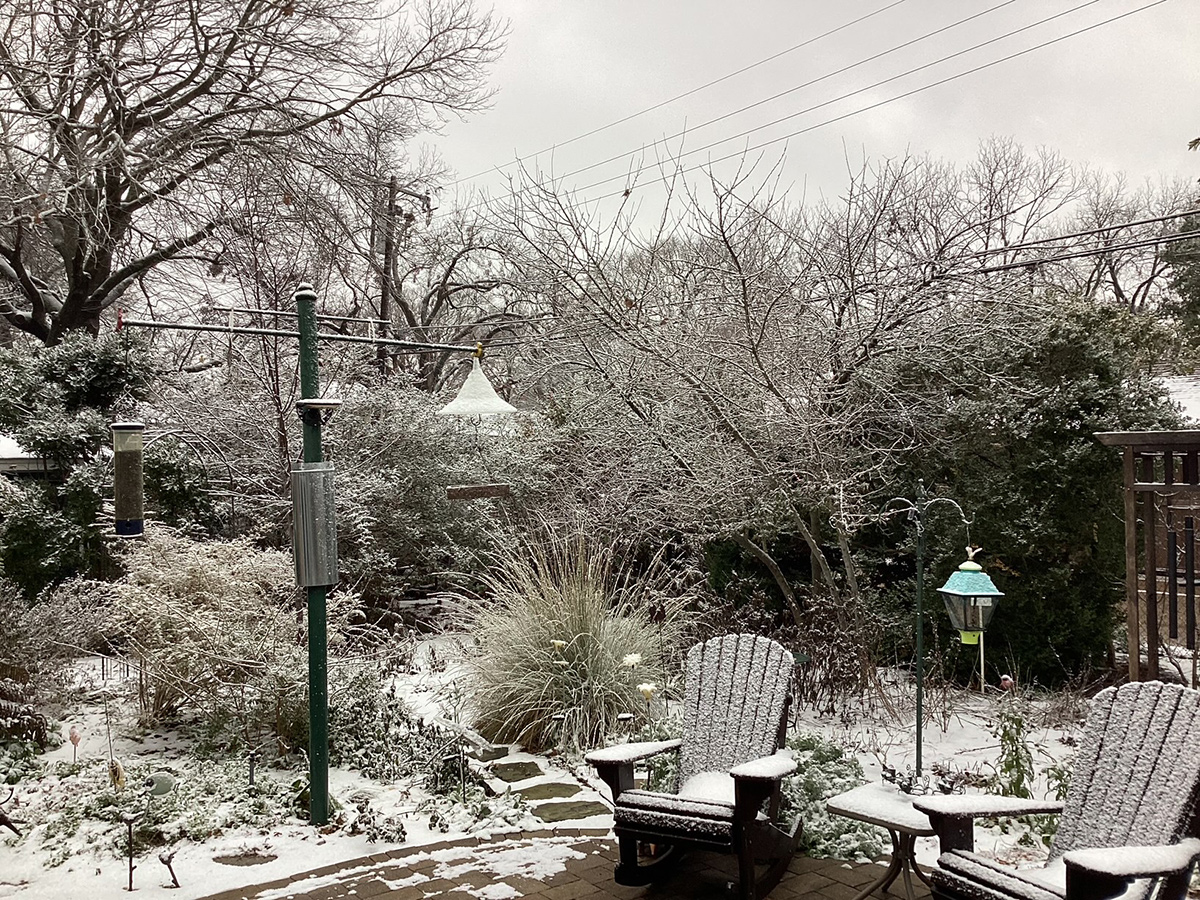 I wanted to submit the view in January this year (snow!)
I wanted to submit the view in January this year (snow!)
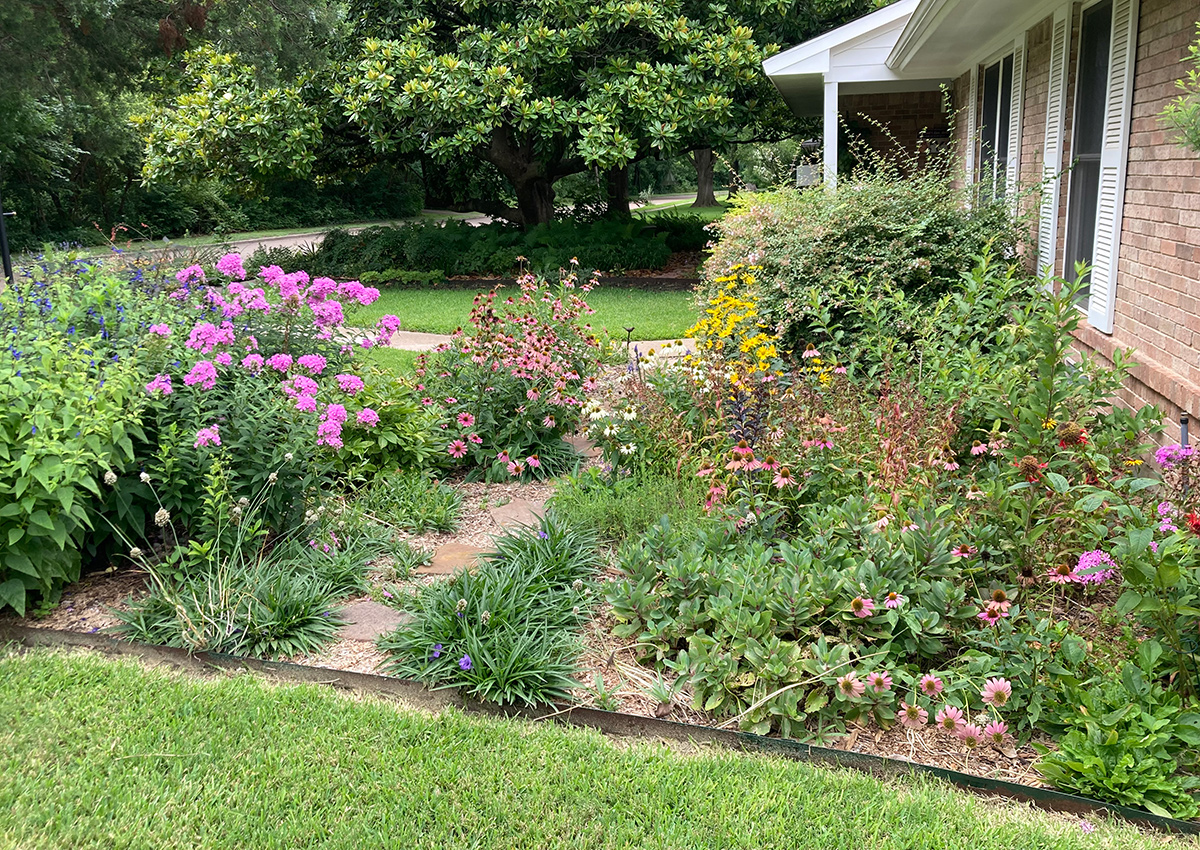 I’ll start in the front yard you saw last year, and walk to the backyard via the east garden.
I’ll start in the front yard you saw last year, and walk to the backyard via the east garden.
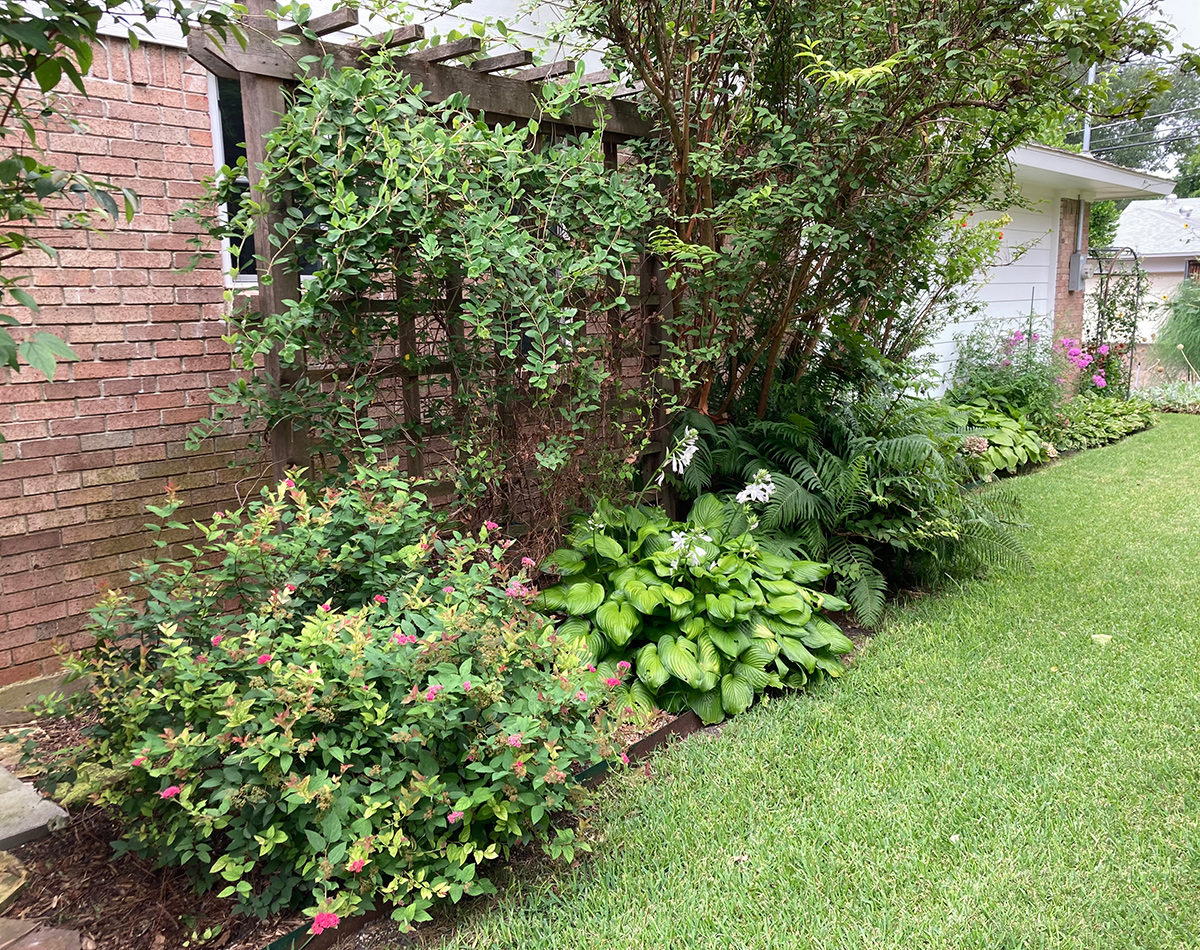 The east side garden has a Double Play Doozie spirea (Spirea x ‘NCSX2’, Zones 3–8), a yellow native honeysuckle (Canyon flava, Zones 5–8) on a trellis, a Callferns, Guacamole hosta (Hosta ‘Guacamole’, Zones 3–8), pomegranate (Punica granatum Zones 8–10), Aphrodite hosta (Hosta ‘Aphrodite’, Zones 3–8), pink phloxand box-store hosta my papa gave me when we moved in.
The east side garden has a Double Play Doozie spirea (Spirea x ‘NCSX2’, Zones 3–8), a yellow native honeysuckle (Canyon flava, Zones 5–8) on a trellis, a Callferns, Guacamole hosta (Hosta ‘Guacamole’, Zones 3–8), pomegranate (Punica granatum Zones 8–10), Aphrodite hosta (Hosta ‘Aphrodite’, Zones 3–8), pink phloxand box-store hosta my papa gave me when we moved in.
 At the backyard gate, looking back on the east arch with a Scentsation honeysuckle (Lonicera periclymenum ‘Scentsation’, Zones 4–9), relocated there this spring. The Jacob Cline bee balm (Monarda Didyma ‘Jacob Cline’, Zones 4–9) is taking a rest, the butterfly weed below hasn’t stopped since spring.
At the backyard gate, looking back on the east arch with a Scentsation honeysuckle (Lonicera periclymenum ‘Scentsation’, Zones 4–9), relocated there this spring. The Jacob Cline bee balm (Monarda Didyma ‘Jacob Cline’, Zones 4–9) is taking a rest, the butterfly weed below hasn’t stopped since spring.
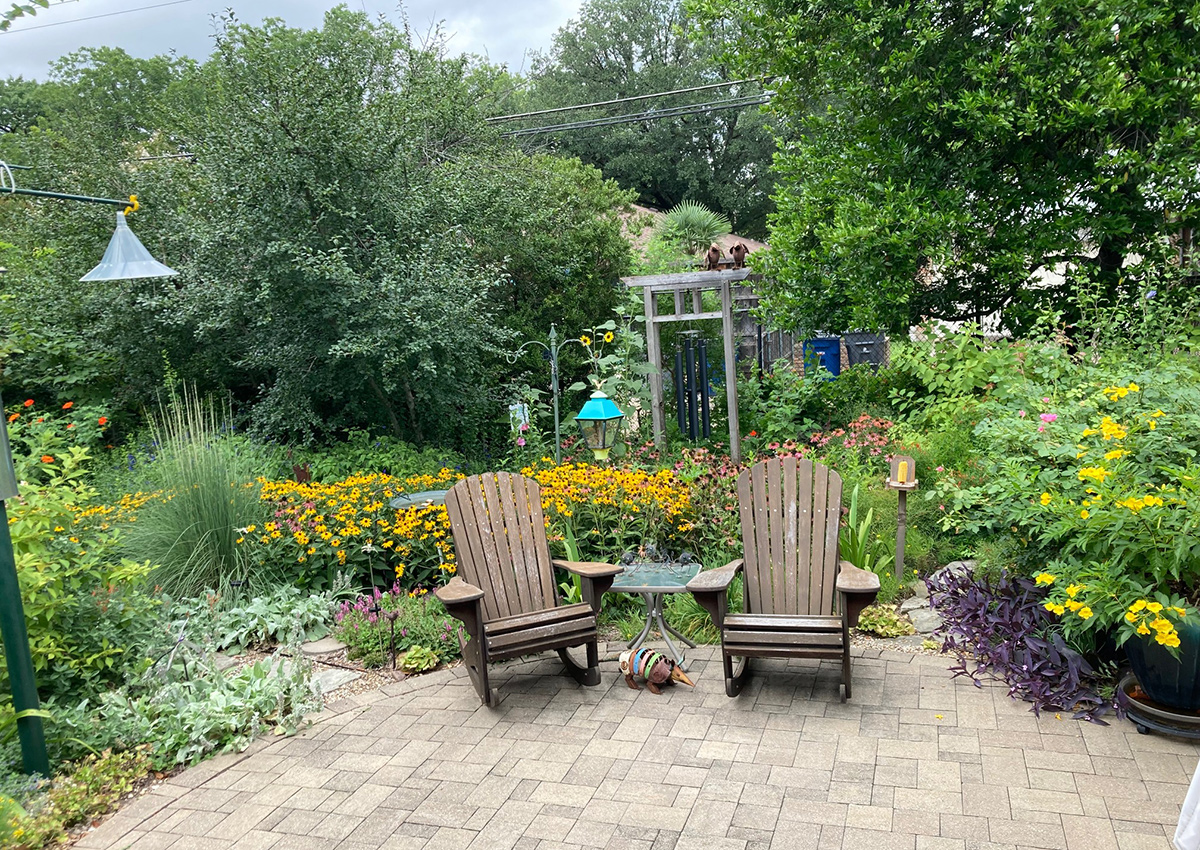 Overview of the backyard. Ignore the neighbor’s trash bins peeking into the garden, the Turk’s cap (Malvaviscus arboreus our. drummondii, Zones 7–11) will hide them later this year. Goldsturm Black-eyed Susan (Rudbeckkia bright our. Sullivans ‘Goldsturm’, Zones 3–9), Mexican sunflower (Tithonia Rotundifolia, annual), Lindheimer’s Muhly (Muhlenbergia lindheimeri, Zones 6–9), possumhaw (Ilex decidua, Zones 5–9), Black and Blue salvia (Salvia guaranitica ‘Black & Blue’, Zones 7–10), coneflower, beautyberry (Callicarpa americana, Zones 6–10), esperanza (Tecoma stans, Zones 10–11).
Overview of the backyard. Ignore the neighbor’s trash bins peeking into the garden, the Turk’s cap (Malvaviscus arboreus our. drummondii, Zones 7–11) will hide them later this year. Goldsturm Black-eyed Susan (Rudbeckkia bright our. Sullivans ‘Goldsturm’, Zones 3–9), Mexican sunflower (Tithonia Rotundifolia, annual), Lindheimer’s Muhly (Muhlenbergia lindheimeri, Zones 6–9), possumhaw (Ilex decidua, Zones 5–9), Black and Blue salvia (Salvia guaranitica ‘Black & Blue’, Zones 7–10), coneflower, beautyberry (Callicarpa americana, Zones 6–10), esperanza (Tecoma stans, Zones 10–11).
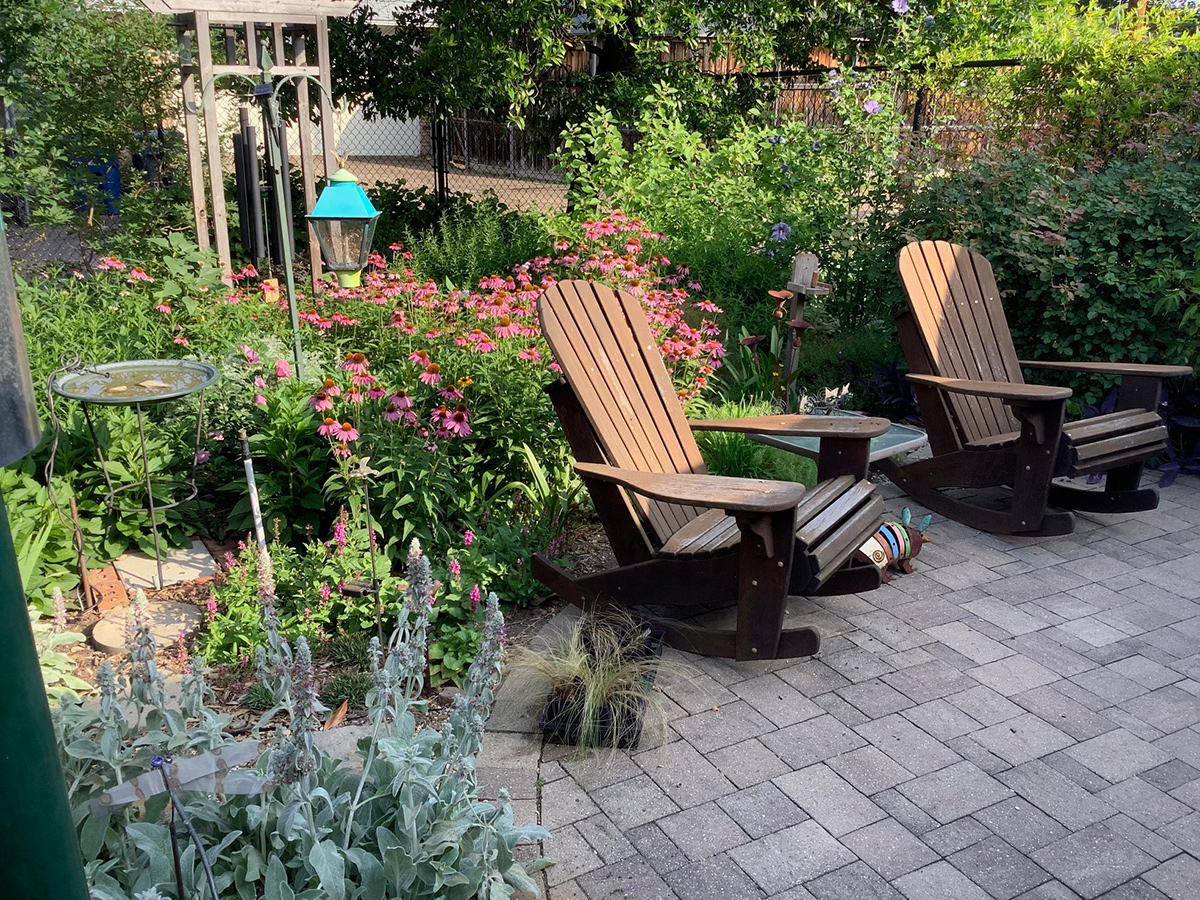 |
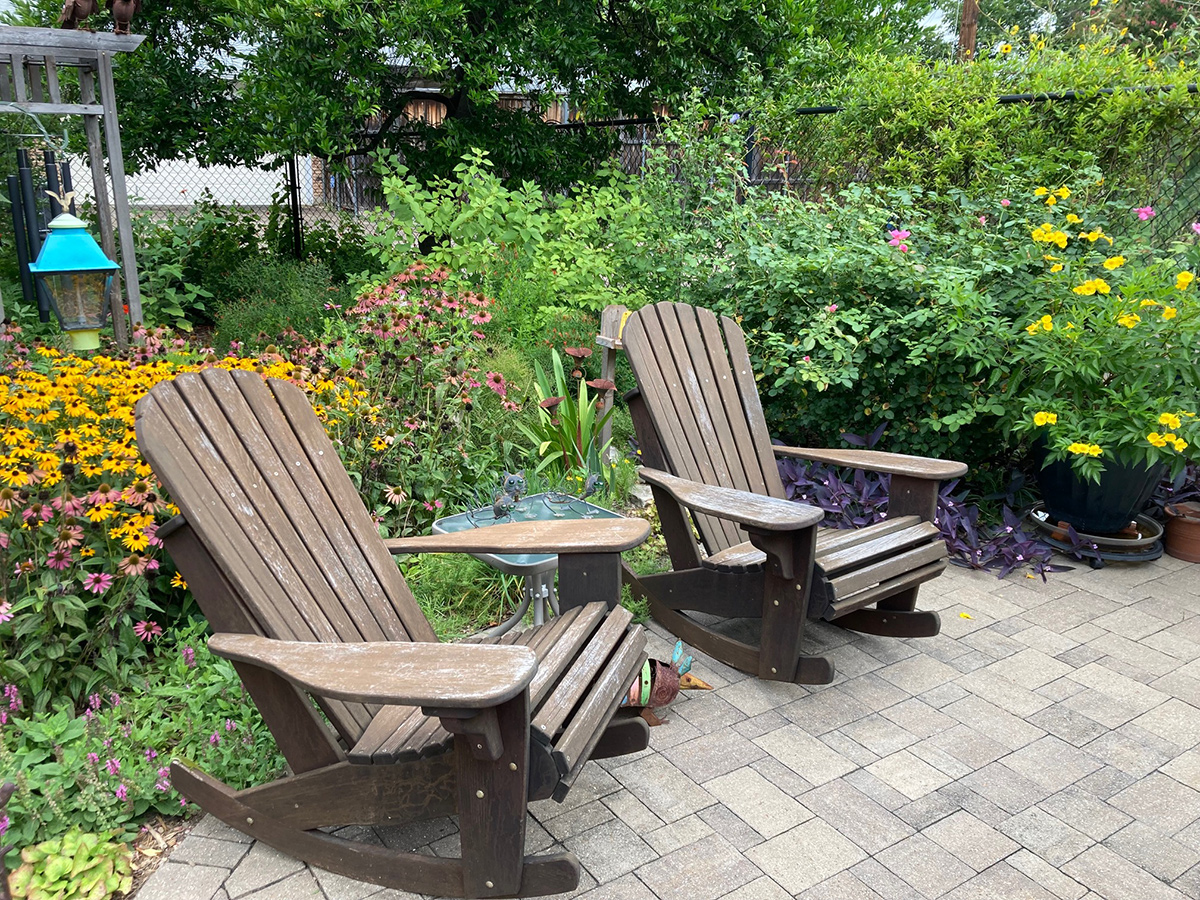 |
Two views, one early June, one July. Coneflowers give way to Goldsturm Black-eyed Susans. The potted Gold Star esperanza (Tecoma stans ‘Lonesp’, Zones 9–11) is blooming, the Pink Nebula salvia (Salvia woody ‘Pink Nebula’, Zones 4–9), purple spiderwort (Tradescantia pale, Zones 10–11), beautyberry, Katy Road Pink rose (A.K.A. ‘Carefree Wonder’) (Rosa ‘Meipitac’, Zones 4–9).
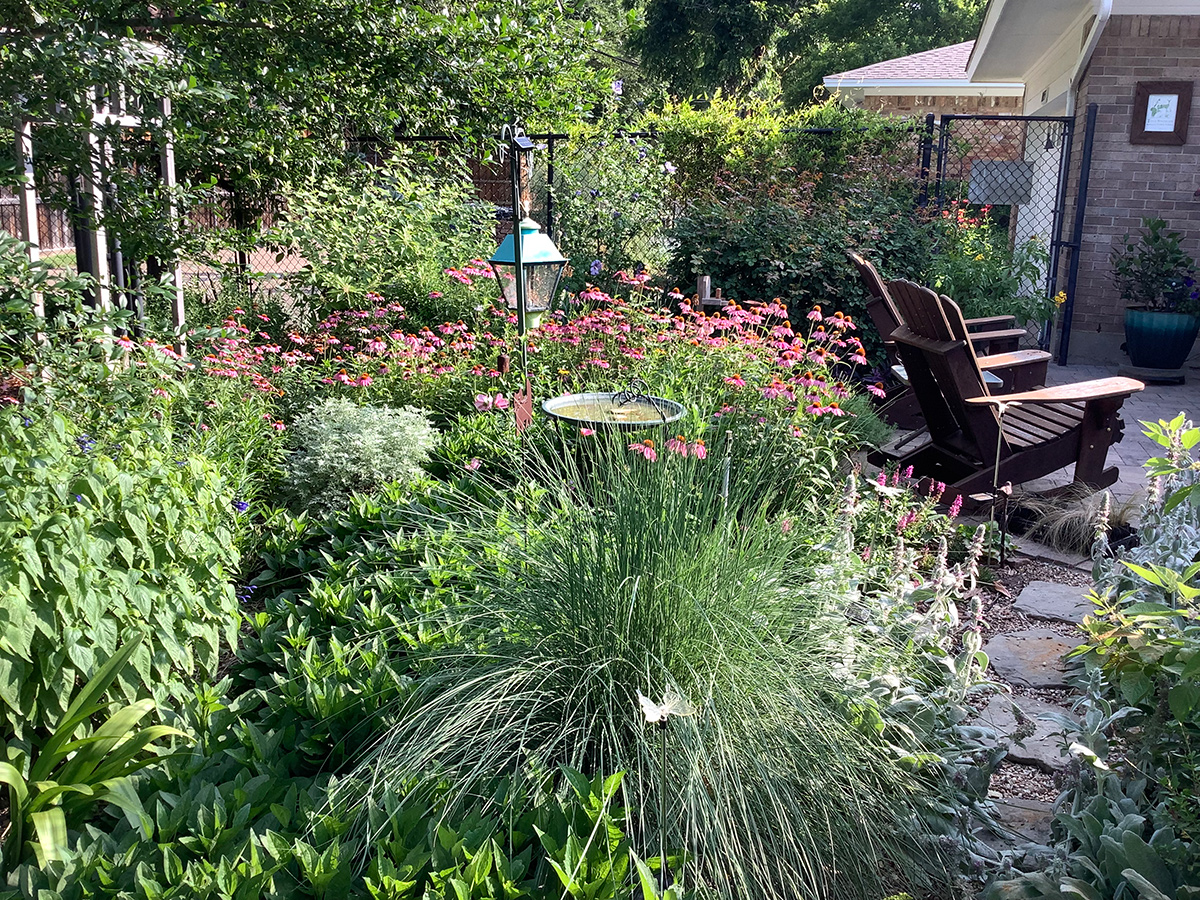 Stepping back, Lindheimer’s Muhly, Black and Blue salvia, Twist of Lime abelia (Abelia X Grandiflora ‘Hopley’s’, Zones 6–9). Redbud, Possumhaw, and cherry laurel trees (Prunus laurocerasus, Zones 6–8).
Stepping back, Lindheimer’s Muhly, Black and Blue salvia, Twist of Lime abelia (Abelia X Grandiflora ‘Hopley’s’, Zones 6–9). Redbud, Possumhaw, and cherry laurel trees (Prunus laurocerasus, Zones 6–8).
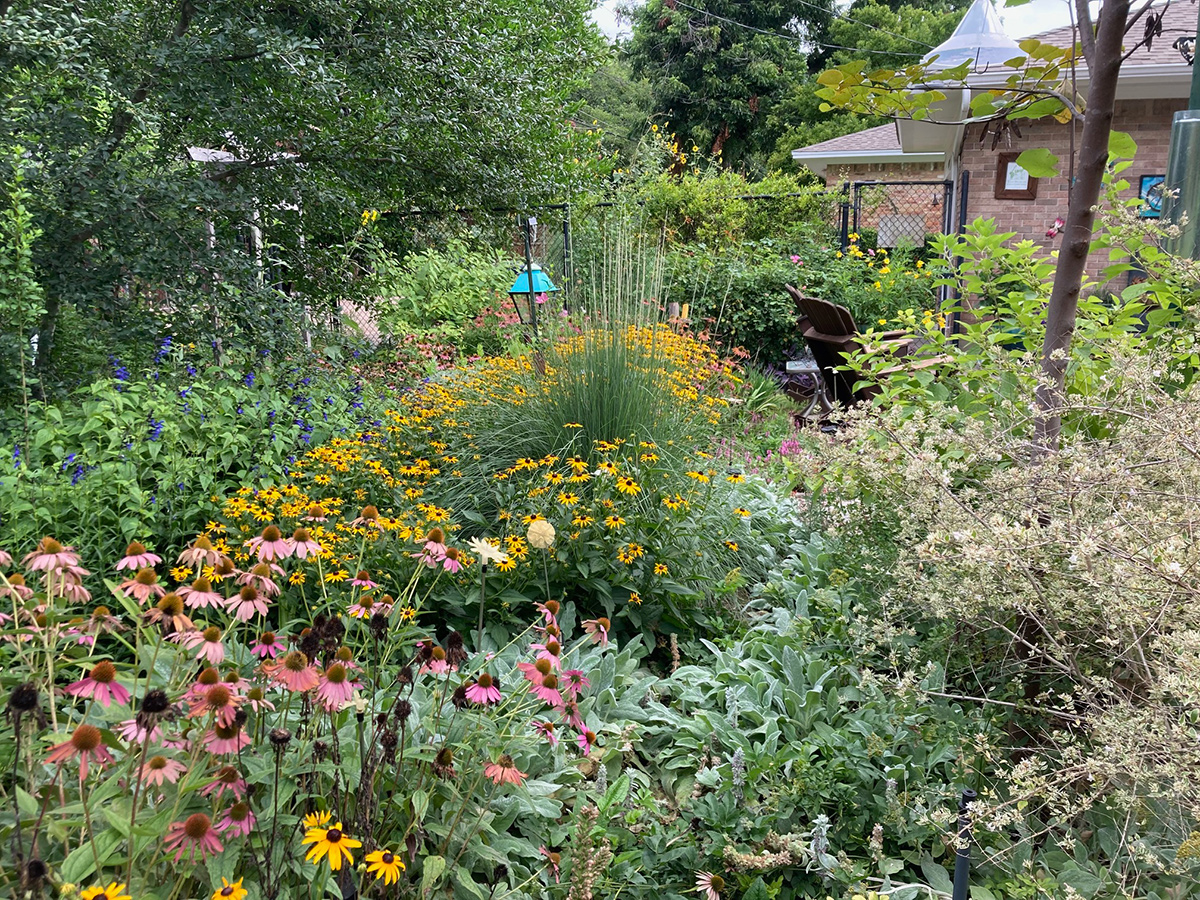 In just a month the path has been covered!
In just a month the path has been covered!
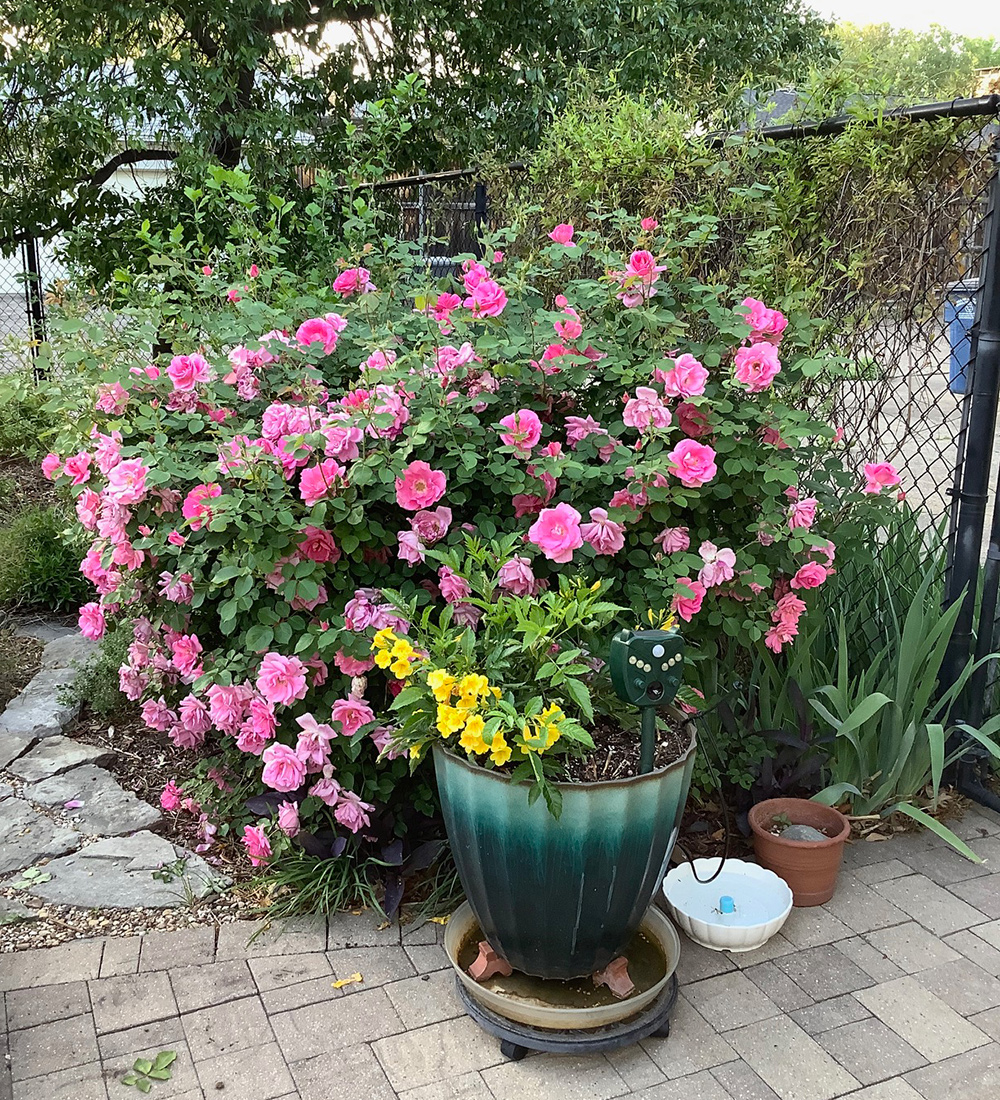 Two antique roses survived the rose rosette virus. Here they are from April: Carefree Wonder pink with a cherry laurel behind…
Two antique roses survived the rose rosette virus. Here they are from April: Carefree Wonder pink with a cherry laurel behind…
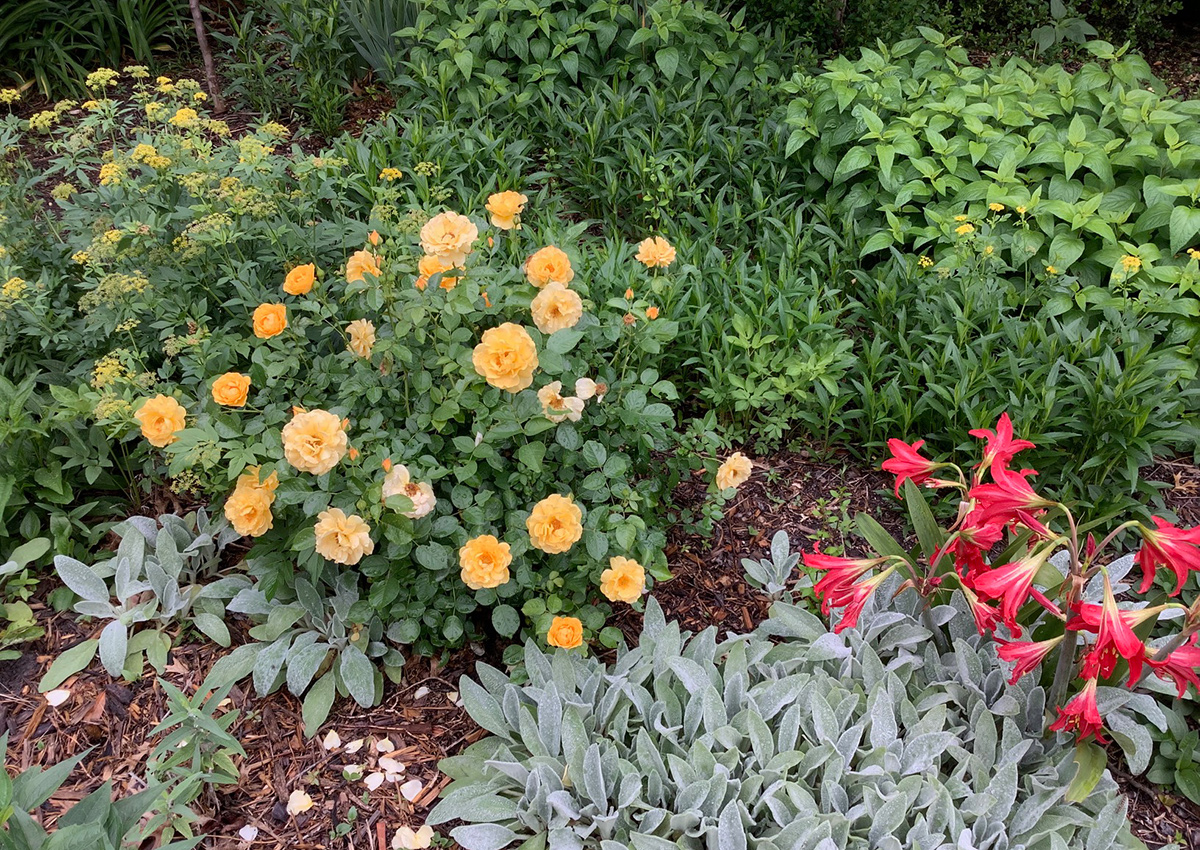 And Harison’s Yellow (Rosa Fetida ‘Harison’s Yellow’, Zones 3–9). Harison’s is near some golden alexander (Zizia Aurea, Zones 3–8), lambs ear (Stachys Byzantina and cvs., Zones 4–8), and a red antique garden amaryllis.
And Harison’s Yellow (Rosa Fetida ‘Harison’s Yellow’, Zones 3–9). Harison’s is near some golden alexander (Zizia Aurea, Zones 3–8), lambs ear (Stachys Byzantina and cvs., Zones 4–8), and a red antique garden amaryllis.
Thank you so much for sharing more of your gorgeous gardens with us, Sharon! It’s incredibly inspiring to see the beauty you are able to cultivate while prioritizing beneficial plants and wildlife-friendly practices.
Is your garden a haven for local wildlife and pollinators like Sharon’s? What plants native to your region do you enjoy growing? Let us know in the comments below how you garden in harmony with the ecosystem, or consider sharing your pollinator paradise with Garden Photo of the Day! Follow the directions below to submit photos via email, or send me a DM on Instagram: @agirlherdogandtheroad.
We want to see YOUR garden!
Have photos to share? We’d love to see your garden, a particular collection of plants you love, or a wonderful garden you had the chance to visit!
To submit, send 5–10 photos to (email protected) along with some information about the plants in the pictures and where you took the photos. We’d love to hear where you are located, how long you’ve been gardening, successes you are proud of, failures you learned from, hopes for the future, favorite plants, or funny stories from your garden.
Have a mobile phone? Tag your photos on Facebook, Instagram, or Twitter with #FineGardening!
Do you receive the GPOD by email yet? Sign up here
Fine Gardening Recommended Products
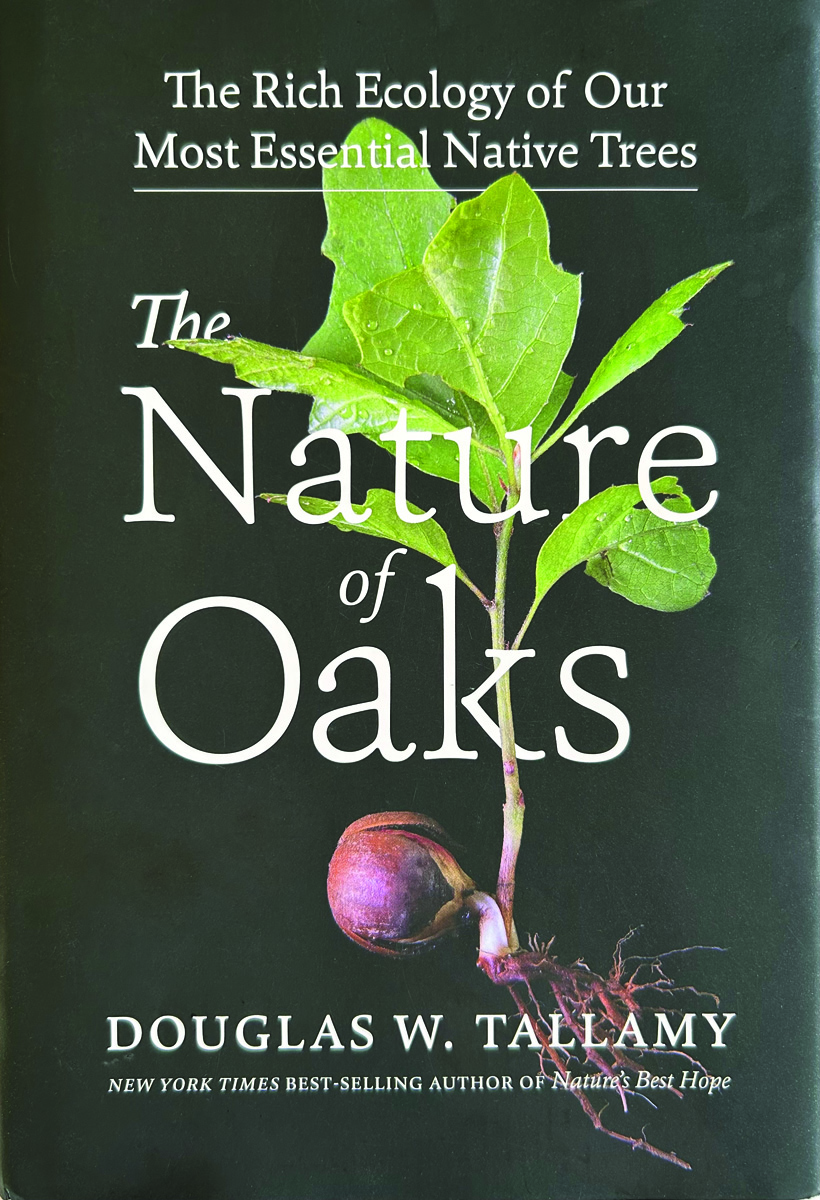
The Nature of Oaks: The Rich Ecology of Our Most Essential Native Trees
Fine Gardening receives a commission for items purchased through links on this site, including Amazon Associates and other affiliate advertising programs.
The Nature of Oaks reveals what is going on in oak trees month by month, highlighting the seasonal cycles of life, death, and renewal. From woodpeckers who collect and store hundreds of acorns for sustenance to the beauty of jewel caterpillars, Doug Tallamy illuminates and celebrates the wonders that occur right in our own backyards. He also shares practical advice about how to plant and care for an oak, along with information about the best oak species for your area.
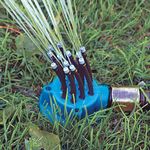
D&X Garden Sprinkler
Fine Gardening receives a commission for items purchased through links on this site, including Amazon Associates and other affiliate advertising programs.
– The Sprinkler is made of durable ABS Plastic, Base connector: Approx. 1/2″ ; Side connector: Approx. 3/4″
– 12 flexible nozzles that you can set in any direction, simply bend hoses to customize new watering patterns
– 360 degree coverage of 3000 sq. ft area
– 3.5 x 4 x 6 inches

